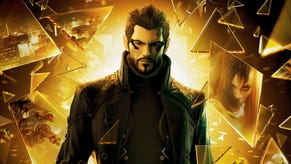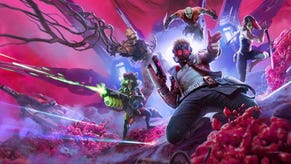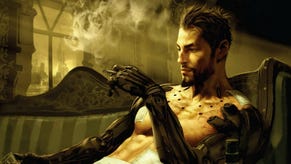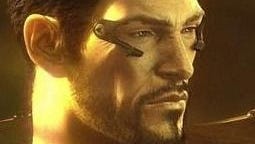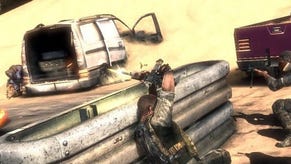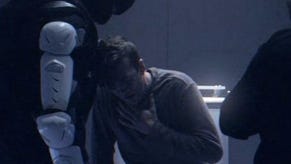Deus Ex: Human Revolution
The Revolution will not go unscrutinised.
The first time we landed in a futuro-Asian city was during the original Deus Ex, while we were in pursuit of a hacker called Tracer Tong. It wasn't all work though. During the search we took some time out and went to a Triad-run club called Lucky Money. Here we bought an Australian NPC countless drinks in an attempt to seduce her, then gave up and hammered the space bar so we could jump up and down on the dance floor in front of a big mirror.
Well, that's what I did anyway. What with it being Deus Ex you probably went about it in an entirely different way - perhaps involving extreme violence, air ducts, or a code you found on a datapad in the toilets.
In its prequel, Deus Ex: Human Revolution, you'll land on the bottom layer of a double-decker futuro-Asian city: an island called Heng Sha that lies just off the coast of Shanghai. It's a Victoria Sponge of an urban conglomeration, the silicon valley of human augmentation, and you're here to track down another hacker.
The only information you have to go on is that there's a man called Tong who runs a downtown (and below town) club called The Hive who has some information, as well as ringing a bell or two.
While you're there you might even be able to dabble in some extreme violence and air ducts, and there's certainly a datapad with a code on in the toilets. The presence of Australian NPCs and mirrors is yet to be confirmed. The more things change, the more they seem to stay gloriously the same.
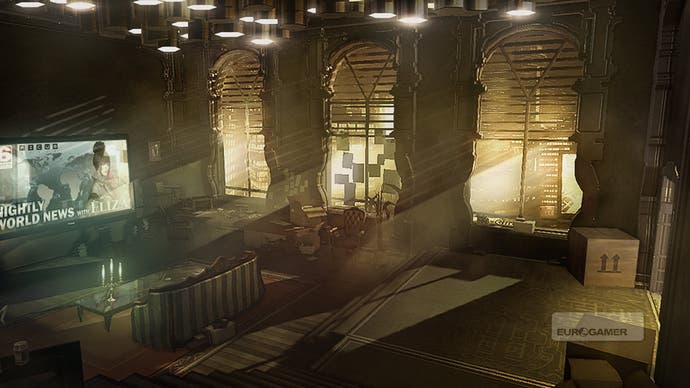
And that - somewhat early on in what will be a glowing preview of Deus Ex: Human Revolution, by the way - is the message I want to convey. This is, recognisably and joyfully, a true Deus Ex game - we can stop worrying and start tentative negotiation with the hype train.
When you see the game in motion you find yourself breathing sigh of relief after sigh of relief at the tiniest of things - from the way the screen looks after you've hacked a computer and are fiddling with security feeds, to the way a strength augmentation will let you pick up boxes that are in your path.
Sure, a 20-minute preview presentation of the nerfed and agoraphobic Deus Ex: Invisible War may well have featured box movement and correctly represented CCTV too - but with DX3 you can't escape the feeling that Eidos Montreal knows what made the original such a classic, and the follow-up a disappointment in comparison.
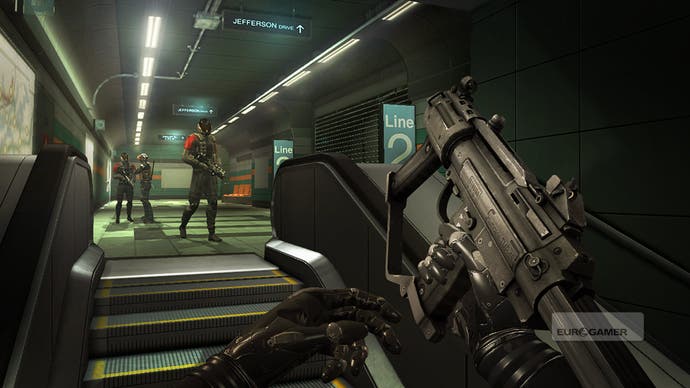
It helps, of course, that the game is utterly beautiful and its world painstakingly created. As you descend the metal steps into one of Shanghai's main streets you see that it's an area where the Eidos Montreal team is letting itself go full-on Blade Runner. The narrow, neon-streaked avenue is bathed in mist and smoke while a huge number of characters get on with life beneath the moving video-adverts that stretch off into the sky - from winking Asian ladies selling fizzy drinks to a solemnly glowing butter-like spreads.
Below, pedestrians make their way through the streets, heavily armed cops make their patrol, prostitutes ply their wares on street corners and shifty guys leaning on walls look on over the scene. It's a sight that genuinely takes your breath away.
As does (having either beaten up the doorman, beaten him in verbal banter, snuck round the back, gone through the sewers or - rather boringly - paid your entry fee) the inside of The Hive club - where a good 50 NPCs dance, gyrate, order drinks and pose in stunningly realised environs. Turns out that we have come a long way from jumping up and down in front of the Lucky Money mirror after all.


